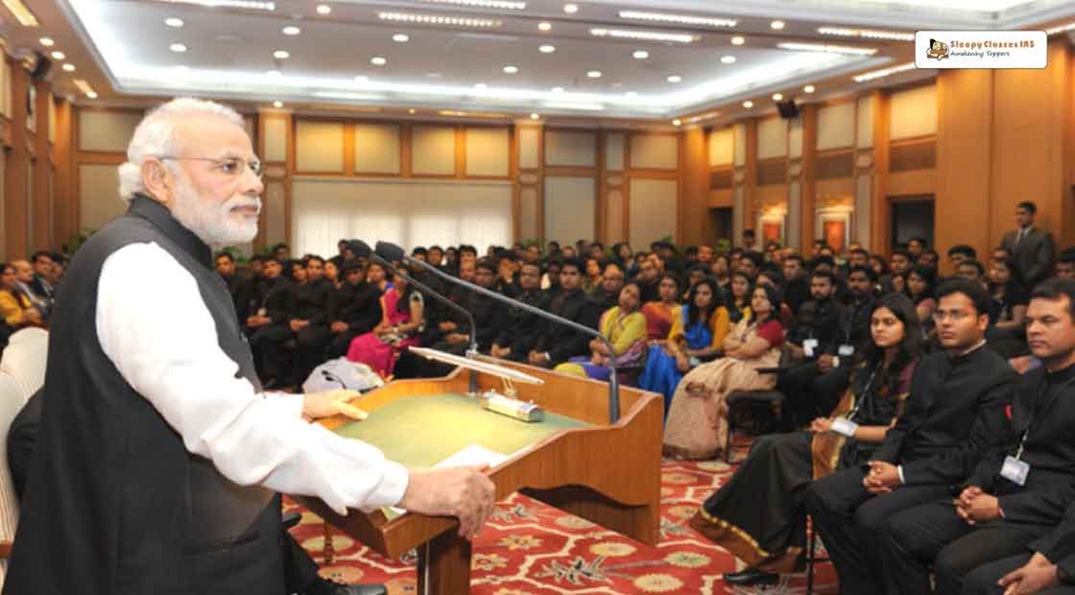Why do young children come down with fevers as soon as their fathers leave for sailing/ forward area? Why do wives start acting ‘strangely’ an evening prior to their husbands taking-off on TY (Temporary) duty? Why do older adolescents need the presence and attention of all parental-figures in critical moments of their growing stages?
“God chose the strongest, the bravest and the most courageous…and He made them military families”- Unknown.
Life in a military family is great; however, emotional and psychological tolls on dependents are often passed over. These issues are not explored in the Indian military setting. They are neither openly nor sparingly spoken of.
Military families play an integral role in the readiness and well-being of the military force. [1] Soldiers are groomed to never carry their domestic worries to the battlefield. This necessitates that the home-front of serving personnel “keep it together”.
Military personnel in India will regularly (and often on, from early in their careers) engage in: sailings for months-on-end, long sorties, night-flying, frequent movements and transfers (leaving on postings first, without their families), frontline postings, non-family station postings, forward postings (with or without their families), special-forces assignments, secret/classified missions, deployment during times of conflict/unrest/war, emergency calls, peace-keeping missions and/or rescue missions.
The demand on a soldier’s time is high and families may not get to spend ‘quality-time’ together.
These circumstances present unique challenges for dependants. There is an almost constant and underlying sense of worry/paranoia in family members when the tenures involve high-risk. Sympathetic nervous reactions resembling “I hope nothing goes wrong”, “What if something bad happens” or “Why can’t I get in touch with them” are natural.
A running commentary on the safety and security of those who have left home through irresponsible conversing, social media, sensationalism and trigger-happy reporting accentuate feelings of distress and agitation for those back home. [2]
Deployment is an emotional cycle, which begins when its information is released to the family – this could also be accompanied by anger. [3] During parental deployment, one may feel isolated, unsupported and anxious (a parent leaving home on military assignments could increase the burden on all family members). [4]
Separation anxiety disorder is a condition in which one becomes fearful and nervous when away from home or separated from loved ones — usually a parent, spouse, child or another caregiver — to whom one is attached. The fear of separation could cause great distress and may interfere with one’s normal activities and functioning. [5]
Separation Anxiety Disorders (SAD) are considered a normal stage of development and often associated with toddlers, younger children and through adolescence. [6] SAD could, however, persist from childhood into adulthood or onset in adulthood. [7] Separation anxiety (in adults) could centre around being away from spouses/children. SAD, like other anxiety disorders, could affect one’s health adversely and have physical manifestations – frequent headaches, stomach upsets [8], cold sweats, bedwetting or palpitations while separated, are common indicators. To be identified as a disorder, anxious dispositions will linger in an individual for weeks/months, with visible symptoms (usually worsening).
In minors, one could lookout for the following common reactions in the absence of a parent: irritability, decreased appetite, apathy, behavioural regressions, personalised and fearful thought-patterns, aggression, whininess, challenging of authority and/or high-risk behaviours like problems with the law, sexual acting-out, drug/alcohol use. [9] SAD in children is a strong risk factor for the onset of mental disorders and mental illness in the future. [10] Older adolescents might feel the need to take charge of family’s affairs, “acting as the head/adult” once a parent is deployed – more often than not, a coping mechanism.
Behavioural changes or mental health problems could affect the military spouse/child alike. These responses (by way of behavioural modifications) that family members might feel the need to make (consciously or unconsciously), take place in order to deal with the new/different scenario at home.
Pre-deployment, families might prepare for the possible injury/death and separation of the deployed service member. During deployment, nearly all spouses report “feeling lonely”. Spousal-communication and parenting while spouses are deployed are commonly cited issues. Deployment to areas of conflict is associated with increased psychological health problems – particularly depression, anxiety, acute stress reaction and adjustment/sleep-disorders. The length of the deployment and the cumulative months of deployment could increase the likelihood of distress. [11] Some military dependants might find it challenging to stay alone at the mess/transit accommodations/home.
Stigma in the Armed Forces has been identified as a barrier to help-seeking and is a cause for concern. The process by which a person is stigmatised by virtue of association with a mentally ill person is referred to as ‘courtesy’ or ‘associative’ stigma [12] – this could prevent military dependents and family-members in India from seeking help (in military hospitals) if struggling with SAD and other mental health problems; the prevalent fear being that this would stigmatize the military personnel, bringing shame to him/her and the family, and possibly jeopardise growth in service.
It is natural to feel uneasy with loved ones on duty. When, however, this concern operates from a place of heightened fear, the chances of it mutating into panic or anxiety increases. If this state in an individual remains unaddressed, unacknowledged, ignored or simply ‘managed’ through repression-suppression strategies, it could lead to complications like long-term mental health issues or disabilities. Stress/worry over prolonged periods, without working through it in a healthy manner, could lead to lower immunity at all levels.
Delays in treatment may create additional negative impacts on individuals’ long-term health outcomes, relationships, or families. [13] Indirect consequences of anxieties that are not given a healthy release could also lead to disintegration in families, frequent interpersonal relationship problems, inability to focus on academic/work goals, anger-management issues and/or suicide ideation. This could further affect soldiers in their lives and capabilities while discharging their duties towards the nation – their minds and hearts constantly with their families.
If one is a parent, then effectively navigating one’s own anxieties becomes an essential step towards easing the mental health struggles of children at home. [14]
It is important for Services to engage with this situation; which could either develop into a full-blown and complex crisis-situation for a military family or, be handled effectively with appropriate interventions in the nascent stages.
To begin with, the Armed Forces must be sensitised towards the common struggle of SAD in military families – this could come by way of supportive units [15] and/or welfare organisations within. Services could include lecture-series for new and young military partners organised by senior wives, doctors and military personnel with experiences of long deployments – what to expect and necessary lines of help.
Defence hospitals could organize interactive Q&A sessions with military families on SAD and other mental health issues faced during deployment/transfers. Military families facing separation during long/stressful deployments could be encouraged to check in with the psychiatric department (interacting one-on-one or as a family).
Psychiatrists/psychologists/civilian doctors attached to the psychiatric department of defence hospitals become an important resource during this time – with specialists for each age-group. Special attention could be provided to ladies experiencing postpartum depression (while their husbands are deployed) and to families that are experiencing the negative impact of lockdown restrictions with one or more members deployed.
The Services could organise social interaction opportunities exclusive to families that are experiencing long separations – as a means of keeping spirits high and facilitating airing of thoughts and grievances.
Schools run by Armed Forces should be aware of students who are undergoing long separations from the parent, so as to notice changes in behaviour and provide necessary assistance to balance emotional upsets, academics and extra-curricular at an early stage.
It is time for these positive changes to become a part of the system rather than one-time measures or taking emergency actions only at the time of untoward acts, or when it is too late.
References:
- Washington, DC: The National Academics Press. Preventing Psychological Disorders in Service Members and Their Families. Retrieved on 17 August 2020, from https://www.ncbi.nlm.nih.gov/books/NBK222167/
- American Academy of Child & Adolescent Psychiatry. Military Families. Retrieved on 16 August 2020, from https://www.aacap.org/AACAP/Families_and_Youth/Facts_for_Families/FFF-Guide/Families-In-The-Military 088.aspx#:~:text=A%20family%20that%20loses%20the,events%20can%20also%20increase%20concern.
- Military.com. How Deployment Stress Affects Families. Retrieved on 16 August 2020, from https://www.military.com/deployment/effects-deployment-families.html
- Military Families (n 2).
- WebMD. Separation Anxiety in Children. Retrieved on 21 August 2020, from https://www.webmd.com/parenting/separation-anxiety#1
- Mayo Clinic Staff (MAYO Clinic). Separation Anxiety Disorder. Retrieved on 12 August 2020, from https://www.mayoclinic.org/diseases-conditions/separation-anxiety-disorder/symptoms-causes/syc-20377455
- Christine E. Cooper-Vince, Benjamin O. Emmert-Aronson, Donna B. Pincus, Jonathan S. Comer. The Diagnostic Utility of Separation Anxiety Disorder Symptoms: An Item Response Theory Analysis. (2014) 42 The Journal of Abnormal Child Psychology 417. Retrieved on 14 August 2020, from https://www.ncbi.nlm.nih.gov/pmc/articles/PMC4255988/
- Healthline. What Is Separation Anxiety Disorder in Adults? Retrieved on 13 August 2020, from https://www.healthline.com/health/separation-anxiety-in-adults
- ‘Military Families’ (n 2).
- Peter M. Lewinsohn, Jill M. Holm-Denoma, Jason W. Small, John R. Seeley, Thomas E. Joiner Jr. Separation Anxiety Disorder in Childhood as a Risk Factor for Future Mental Illness. (2008) 47 Journal of the American Academy of Child & Adolescent Psychiatry 548. Retrieved on 19 August 2020, from https://www.ncbi.nlm.nih.gov/pmc/articles/PMC2732357/
- Preventing Psychological Disorders in Service Members and Their Families (n 1).
- Surg R Adm A.A.Pawar, Lt Col Ameetha Peters, Jyoti Rathod. Stigma of Mental Illness: A Study in the Indian Armed Forces. (2014) 70 Medical Journal Armed Forces India 354. Retrieved on 19 August 2020, from https://www.ncbi.nlm.nih.gov/pmc/articles/PMC4223200/
- Marie-Louise Sharp, Nicola T. Fear, Roberto J. Rona, Simon Wessely, Neil Greenberg, Norman Jones, Laura Goodwin. Stigma as a Barrier to Seeking Health Care Among Military Personnel With Mental Health Problems. (2015) 37 Epidemiologic Reviews 144. Retrieved on 20 August 2020, from https://academic.oup.com/epirev/article/37/1/144/423274
- Lawrence Robinson, Jeanne Segal, Melinda Smith (HelpGuide). Separation Anxiety and Separation Anxiety Disorder. Retrieved on 21 August 2020, from https://www.helpguide.org/articles/anxiety/separation-anxiety-and-separation-anxiety-disorder.htm
- Stigma as a Barrier to Seeking Health Care Among Military Personnel With Mental Health Problems (n 13).
Disclaimer: The views and opinions expressed by the author do not necessarily reflect the views of the Government of India and Defence Research and Studies








